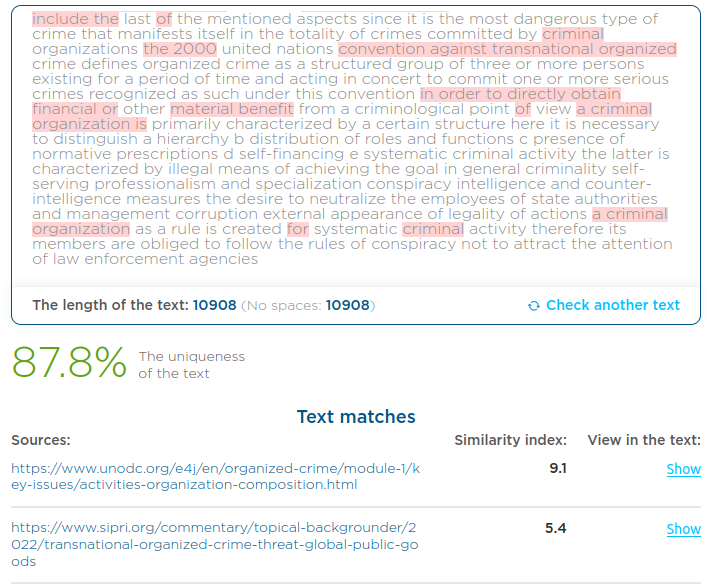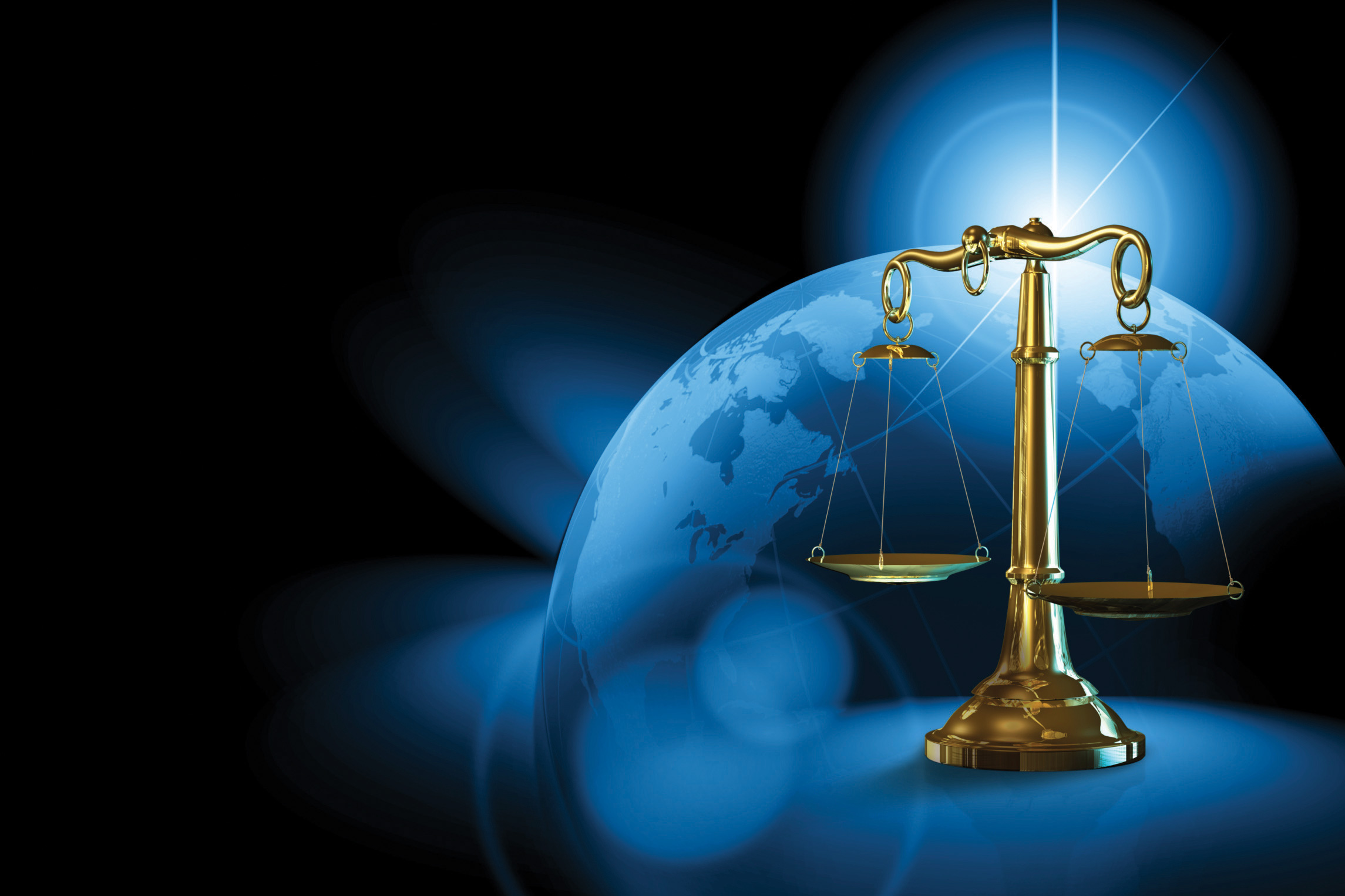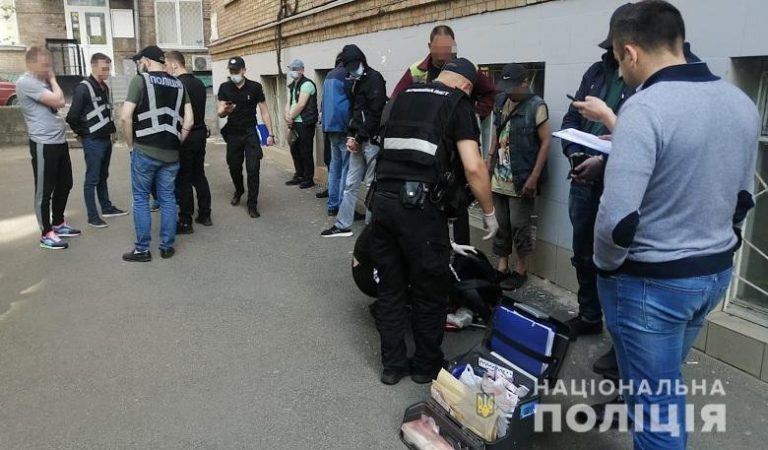Concept and criminological characteristics of organized crime

With regard to science, its contribution to the development of this problem cannot be considered satisfactory, although positive developments have appeared recently. In textbooks and monographs on criminology, the authors resorted only to such formulations as “elements of organized crime”, “especially dangerous manifestations of group crime”, “leadership in a criminal environment”, “organization of criminal groups”, etc. The use of such definitions was explained by insufficient theoretical development the concept of “organized crime” itself.
American scientists made the first attempt to formulate the concept of organized crime. In 1971, the well-known publicist Walter Lippmann noted that, unlike ordinary crime, which is completely robbery in nature, organized crime is connected with the provision of certain services or goods to those who want it.
American criminologist Alfred Landsmith defined organized crime as a special form of cooperation of several individuals or groups with the aim of ensuring their successful activities. Louis Yelli spoke of organized crime as cemented by financial interests. Violence here is used only to protect the economic interests of the criminal group. The majority of organized criminals receive the majority of their profits from illegal markets.
The US President’s Commission on Law Enforcement and the Administration of Justice gave an expanded interpretation of organized crime: it is an association that seeks to function outside the control of the American people and authorities. It includes thousands of criminals who operate within structures as complex as large corporations, obeying their own laws that are enforced more strictly than the laws of the state, its actions are not impulsive: they are the result of complex agreements aimed at achieving complete control over areas of activity to obtain excess profits.
Some scientists characterize organized crime as a complex type of criminal activity that is carried out on a large scale by organized groups that have an internal structure and receive income through the creation and exploitation of markets for illegal goods and services. Others understand organized crime to be a relatively large group of stable and controlled groups of criminals who engage in criminal activities in the form of an industry and create a system of protection against social control using such illegal means as violence, intimidation, corruption and large-scale theft.
Organized crime is a special socially dangerous phenomenon, the “peak of crime”. The basis for distinguishing this type of crime is the nature and degree of interaction of criminals in the implementation of illegal activities. It takes place on the basis of the unity of persons, the demarcation of criminal roles between them, and the hierarchical system of mutual relations. The higher the level of organization in the group, the more managerial functions are separated from directly executive functions.
Organizers can set general tasks, define a line of behavior, ensure a system of coordination of actions of various participants, and their safety. At the same time, they may not even know the direct perpetrators of crimes. Organized groups are stable. Relations between their members are maintained even during the period between the commission of specific criminal acts. At this time, new plans are being developed, the situation is being studied, co-conspirators are being selected, protective measures are being developed in relation to exposing and bringing the guilty to justice.
Criminal associations, depending on the level of their stability, professionalism, field of activity, legal position in the legal structures of society, etc., can be divided into the following types.
1) A simple organized group is a relatively simple form of association of criminals numbering 2-4 people. Thieves, swindlers, burglars, robbers unite in such groups. They do not have a complex structure, strict subordination, clearly defined leader.
2) Structural organized group. Compared to a simple organized group, it is more stable, hierarchical, and adheres to the principle of unity of leadership. The number of such groups is 5-10 or more people. Criminal activity has a permanent nature, more often it is the commission of property crimes or acts related to violence, but the purpose of which is to obtain profits. The leader of such a group determines the direction of its actions, plans and prepares crimes, distributes roles among participants.
In order to ensure its activities, the structurally organized group interacts with other criminal elements, in particular with persons engaged in forgery of documentsentities, by buying up stolen goods, etc. Such groups commit thefts from apartments, cars, robberies, robberies, fraud, extortion, and engage in smuggling. As a rule, they have no corrupt connections.
3) An organized criminal group is already a numerous association, which includes tens or even hundreds of persons who are actively engaged in criminal activities. The level of organization in the general mass of such groups is lower than in gangs and mafia associations, although the presence of discipline, hierarchy, and subordination are characteristic of them. They have a management chain of leaders who have dedicated themselves to criminal activity and determine its direction. Behind them is the bulk of specific performers of “militants” with a certain criminal orientation.
This criminal group is not monolithic, it includes many groups of different levels of organization, numbering 5-10 people. They not only commit crimes, but also constantly control a certain territory (tax collection, extortion, etc.). Often, their leaders, having collected a sufficient amount of money, enter the sphere of legal business, gradually growing into a mafia association.
4) A gang is a form of organized crime, consisting in the creation of an armed group to commit crimes related to attacks on state and public organizations and individual citizens. It is distinguished by increased public danger, since the use of weapons is a mandatory feature of it. Gangs are characterized by a high level of organization and unquestionable subordination to the leader. They operate independently, and the results of their crimes are usually the acquisition of money, currency, weapons, antiques and other valuables.
Some criminologists distinguish three categories of gangs, which are conventionally called: “classic gang”, “specialized gang”, “customers”.
Classic gangs commit such crimes as attacks on banks, cashiers, shops, museums, apartments, etc. They are often combined with murders and causing serious bodily harm. The peculiarity of a specialized gang is that it is practiced in the commission of one, rarely two types of crimes. Most often these are attacks on banks and shops. Gangs of the “customer” type commit crimes to order. They are small in number, their members are well trained physically, armed, and distinguished by an exceptional conspiracy. “Customers” are usually not part of criminal groups, although they may have connections with their leaders. Crimes are committed for a fee.
5) Mafia association. Under the term “mafia” in this sense is a combination of illegal and legal activities, the use of the shortcomings of the economic and legal system for obtaining illegal profits or assigning certain administrative powers, the possibility of influencing authorities. Thus, a mafia association is a criminal group that, in terms of the degree of organization and nature of its activity, has gone beyond its own formation and combines both illegal and legal forms of activity, influencing state policy and directions of socio-economic development.
Mafia associations always have cover in the form of various commercial structures that serve all kinds of scams and laundering of “dirty” money, as well as close corrupt ties with representatives of authorities and management. To ensure protective functions, they involve other criminal groups. Mafia syndicates are headed by several men who usually occupy the same position. From a dozen to hundreds of members gather near them, who, if necessary, are involved for a fee to perform a specific “job”.
Foreign authors single out the general features of mafia associations. To some extent, they can also characterize other forms of organized crime, but they are most characteristic of criminal syndicates: their activities are permanent and take place on a permanent basis; it always takes the form of an illegal business and is related to the provision of certain goods and services. The ultimate goal of mafia syndicates is to obtain huge profits, which is achieved by establishing control over certain spheres of public life. The latter means the monopolization of relevant markets and the penetration of power and management through corruption.
There is another classification of organized crime. Some criminologists distinguish groups with a low, complex and high level of organization. However, such a distribution does not always indicate clear boundaries between them. Almost every such group can be considered as the bearer of many collective features.
Organization can be interpreted in different ways:
- a) as the most expedient sequence of actions;
- b) from the point of view of coordinating the actions of various event participants;
- c) as the presence of an organization — a certain structure adapted to achieve the set goal.
Accordingly, the term “organization” in relation to crime covers both the actions of co-conspirators who planned and committed the crime, and the activities of a criminal organization. The concept of organized crime, in our opinion, should include the last of the mentioned aspects, since it is the most dangerous type of crime that manifests itself in the totality of crimes, committed by criminal organizations.
The 2000 United Nations Convention against Transnational Organized Crime defines organized crime as a structured group of three or more persons, existing for a period of time and acting in concert to commit one or more serious crimes recognized as such under this Convention, in order to directly obtain financial or other material benefit.
From a criminological point of view, a criminal organization is primarily characterized by a certain structure. Here it is necessary to distinguish:
a) hierarchy;
b) distribution of roles and functions;
c) presence of “normative prescriptions”;
d) self-financing;
e) systematic criminal activity.
The latter is characterized by:
- illegal means of achieving the goal (in general criminality — self-serving);
- professionalism and specialization;
- conspiracy;
- intelligence and counter-intelligence measures;
- the desire to neutralize the employees of state authorities and management (corruption);
- external appearance of legality of actions.
A criminal organization, as a rule, is created for systematic criminal activity. Therefore, its members are obliged to follow the rules of conspiracy, not to attract the attention of law enforcement agencies.
Writer Rovendo

Original content license agreement Creative Commons Attribution 4.0 license







